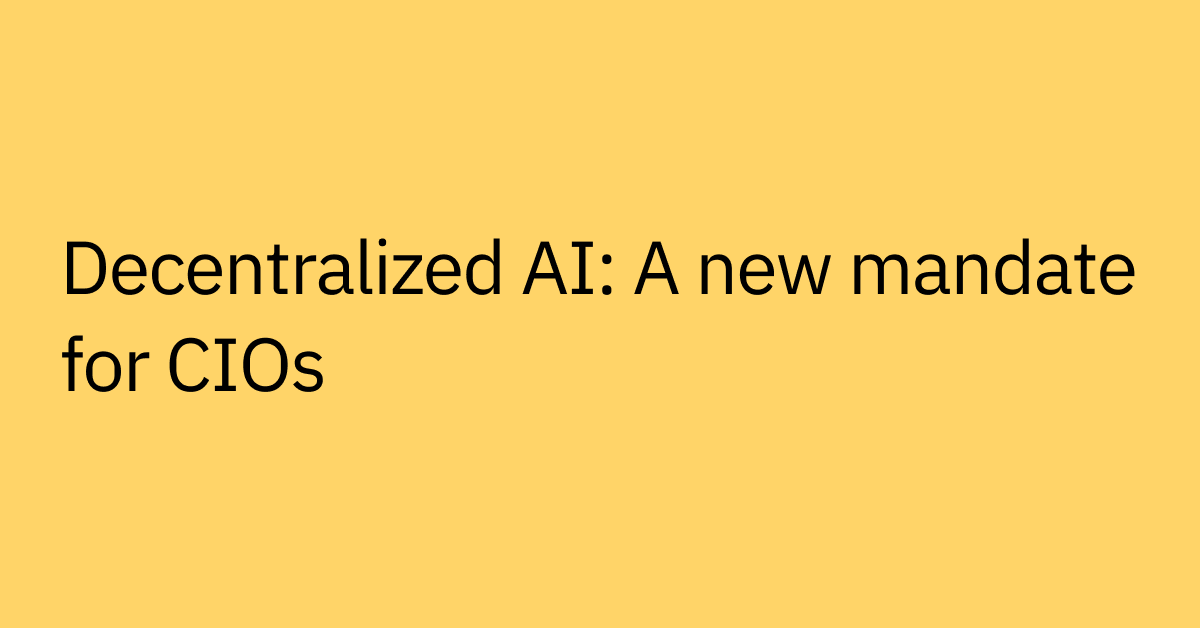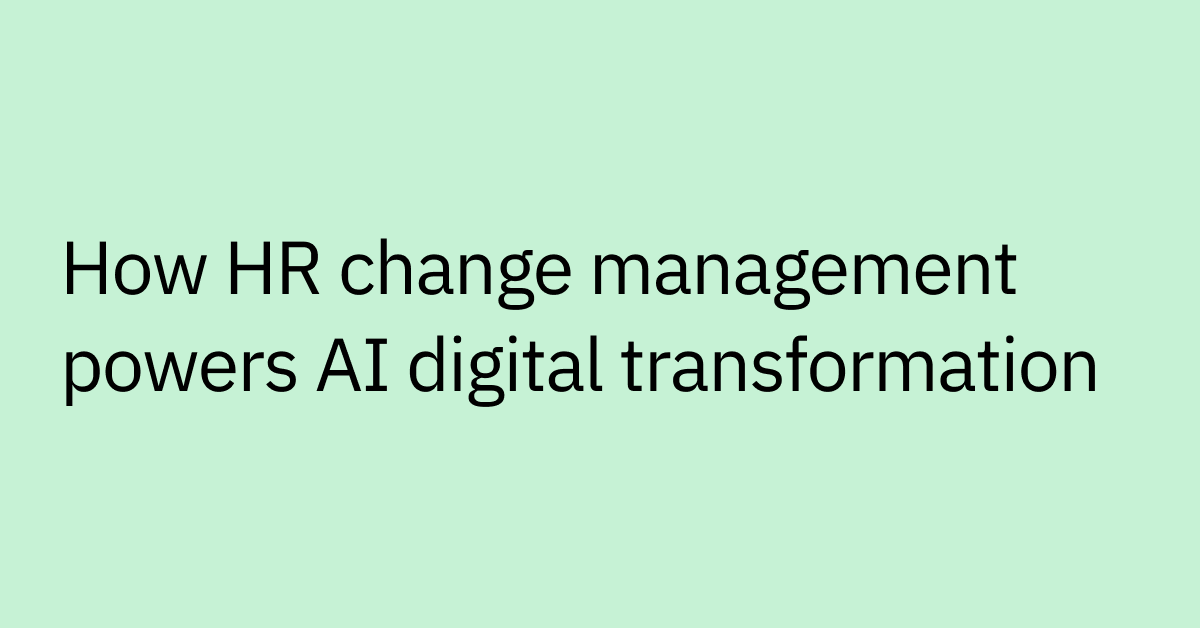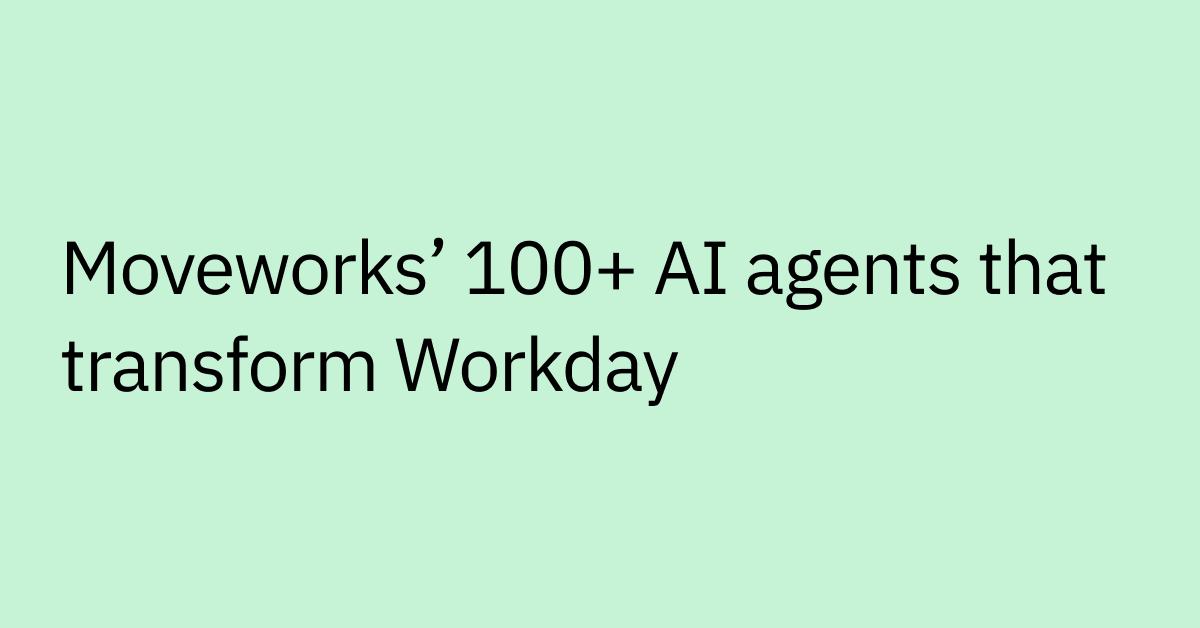Table of contents
AI is no longer a nice-to-have in the enterprise — it’s an indispensable partner and a growing expectation across the business. Today, 78% of companies use AI in at least one business function, and 92% plan to increase their investment in genAI over the next three years. This widespread adoption reflects a critical truth: to unlock real business impact, companies must understand how different types of AI agents can work together — across teams, systems, and workflows.
At Moveworks, we've been on a journey to redefine the role of AI in the workplace, creating powerful AI agents designed to solve real, everyday challenges at scale.
Today we’re kicking off a monthlong series focusing on Ambient agents, ahead of our upcoming AI Agent Hackathons where you can build your own Ambient agents. We’ll anchor on the types of AI agents core to the Moveworks agentic AI platform and showcase the transformative impact of Ambient agents, how they’re brought to life, and discuss their applications.
Your blueprint for AI transformation
The prevalence of AI agents is only going to continue to grow, but without the right strategy or understanding, it risks becoming just another buzzword. AI agents are LLM-powered intelligence that have access to tools and uses them to accomplish a goal by reasoning, planning, acting, and adapting. Each type of AI agent plays a specific role in solving enterprise challenges, from surfacing insights to automating actions to running end-to-end workflows, silently in the background. Choosing the right agent for the right task is not only a technical decision, but also a strategic one.
When deployed intentionally, AI agents streamline operations, reduce manual effort, and accelerate informed decision-making across the business. They turn static tools into dynamic systems that empower teams to move faster, focus on high-value work, and respond in real time.
Understanding these agent types is the first step toward building a future-proof AI strategy that translates potential into performance.
AI agent types and applications
Organizations need an AI strategy that’s not just intelligent, but intentional and built to solve real problems across the enterprise.
That’s why Moveworks focuses on three core types of AI agents, each purpose-built for a specific role and designed to work together as a cohesive, intelligent system.
- Aggregation agents that cut through the complexity of information overload
- Action agents that execute tasks on behalf of a user with precision
- Ambient agents that operate in the background and spring into action as needed in response to signals from other systems
Welcome to the AI party — let’s dive in!
1. Aggregation agents: The enterprise knowledge navigator
One of the most persistent challenges in the enterprise is lack of discoverability: the inability to find the right information at the right time. As data sprawls across tools, systems, and formats, knowledge gets buried, which slows down decision making, frustrates employees, and creates unnecessary delays to executing core business workflows.
Aggregation agents are designed to cut through this complexity. They act as intelligent information gatherers, surfacing insights from both structured data (like fields in a CRM or ITSM system) and unstructured data (like documents, chat threads, or knowledge articles).
The result is fast, contextual answers, all delivered in the flow of work. They transform fragmented information into comprehensive, actionable insights, empowering employees to make informed decisions faster and with confidence.
Let’s dive into a few examples.
Aggregation agents for revenue operations teams
RevOps teams need precise and real-time insights about revenue distribution across industries to guide strategic business decisions. Through structured data analysis, AI agents can gather relevant customer information, triage data, and conduct on-the-spot analyses to deliver clear takeaways that empowers faster, smarter planning.
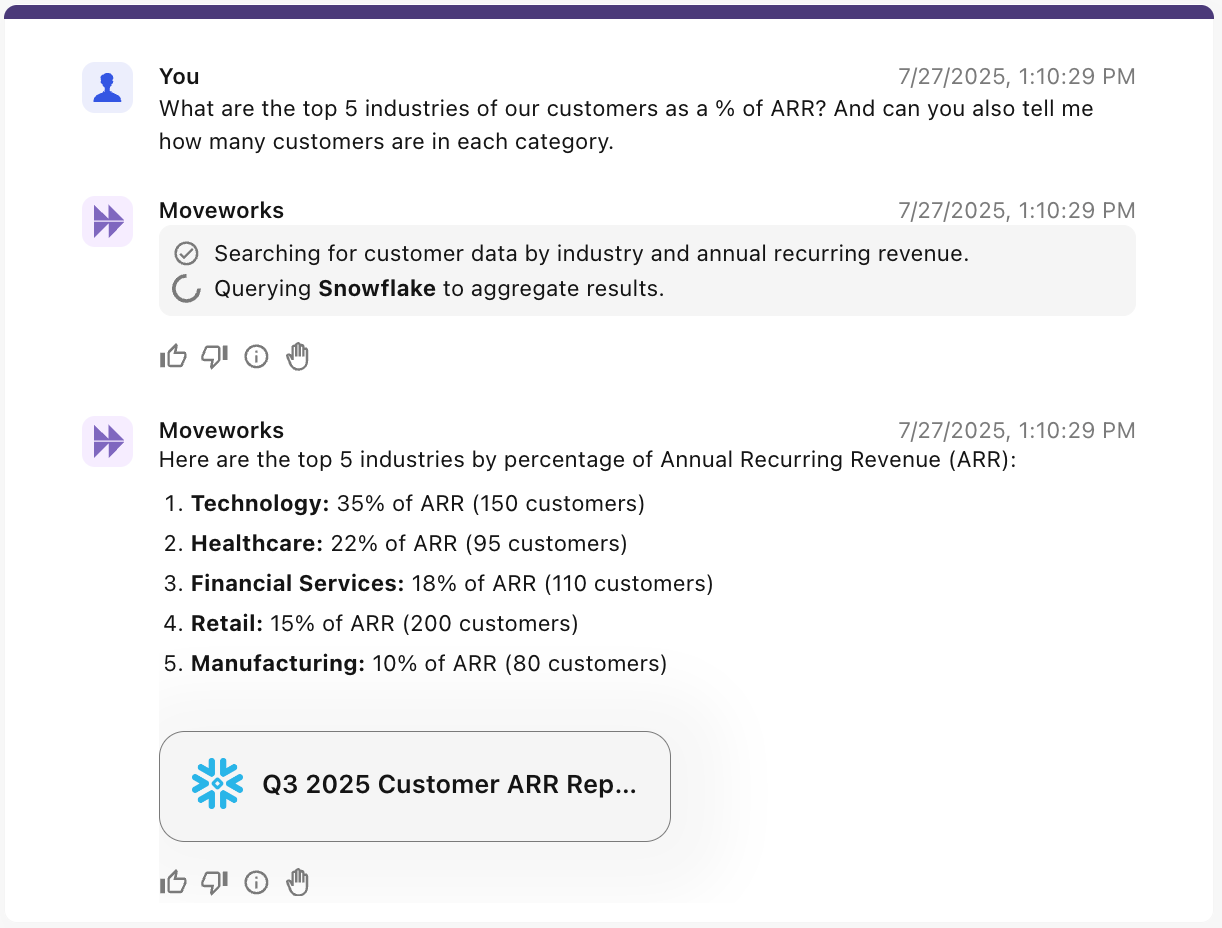
Aggregation agents for IT teams
IT teams often need to identify how many software licenses are unclaimed to ensure they adhere to licensing limits. AI agents streamline this process by gathering this information promptly, which helps reduce wasted spend and drives improved license allocation.
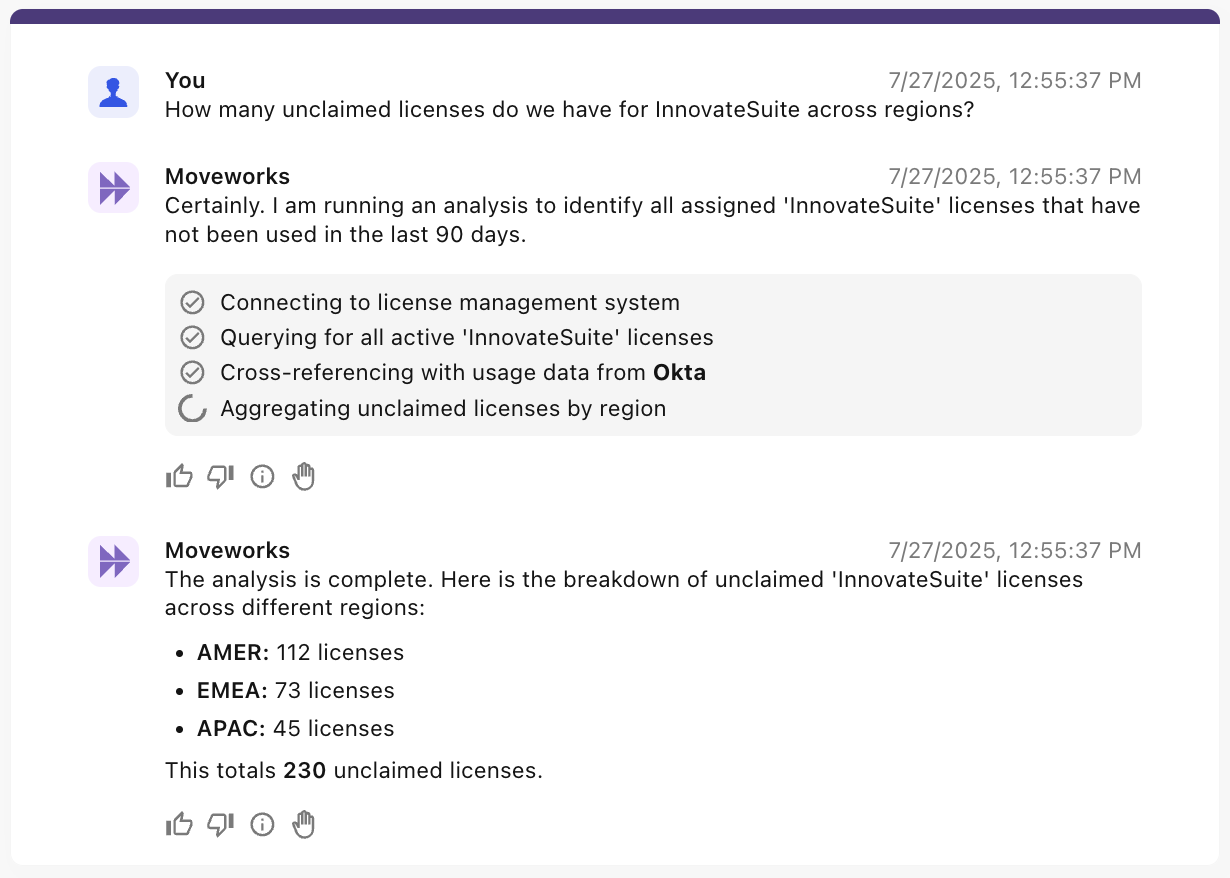
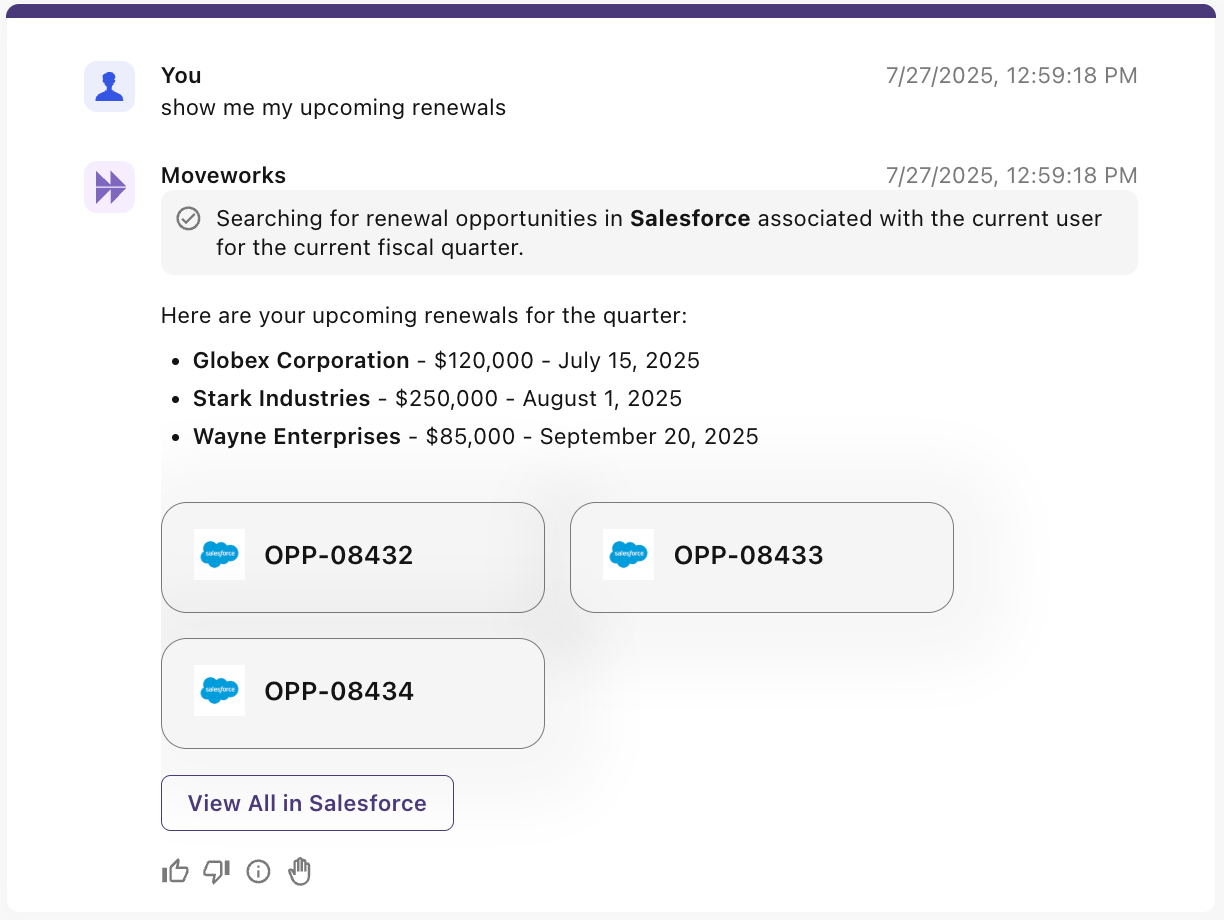
Check out our AI Agent Marketplace to see 600+ AI agents you can deploy across teams, systems, and workflows.
2. Action agents: The workhorses of enterprise automation
Action agents address the challenge of execution. Too many processes still rely on manual steps, complex systems, or slow handoffs that delay outcomes. Action agents remove these bottlenecks by taking action on behalf of the user through a single interface when prompted.
Whether it's updating a system record, provisioning access, submitting an expense report, or kicking off a workflow, these agents operate across tools to get work done instantly and accurately.
Action agents are the workhorses of enterprise automation, designed to execute business tasks as first-class citizens, interacting seamlessly and securely with your most critical systems. By leveraging APIs and endpoints across your applications, they transform tedious, repetitive tasks into efficient, automated processes, all while adhering to your defined business rules and workflows. This ensures actions are not only fast, but also compliant and consistent, freeing up your teams to focus on higher-value, strategic work.
Let’s dive into a few examples.
Legal teams need fast, compliant ways to initiate standard agreements like MNDAs without slowing down the sales cycle. AI agents can automatically generate and send pre-approved MNDA templates to clients based on request triggers, ensuring consistency while reducing legal bottlenecks and manual effort.
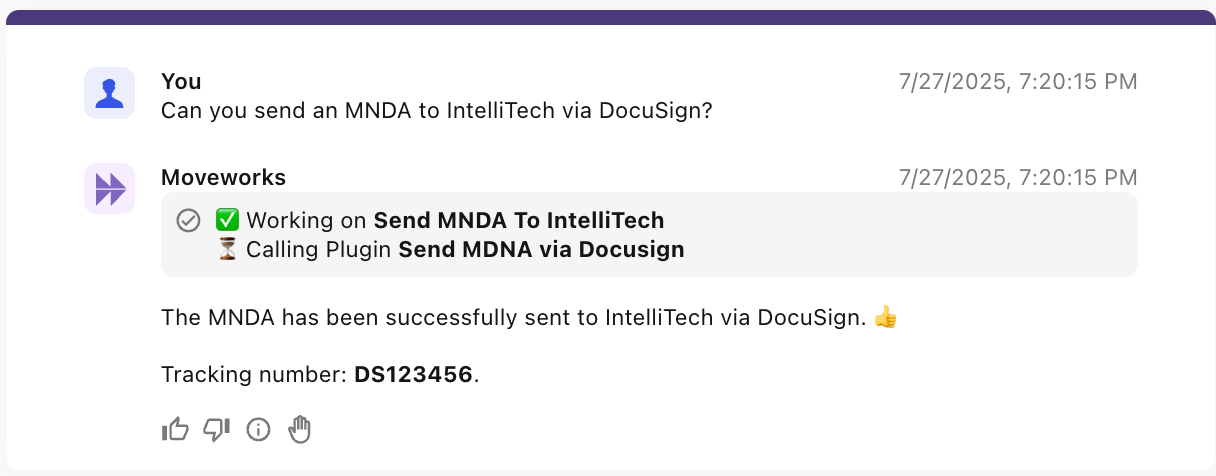
Requesting time off is often slow and requires navigating complex interfaces. AI agents simplify submissions, give managers real-time updates, and provide HR with accurate data about employee time off trends.
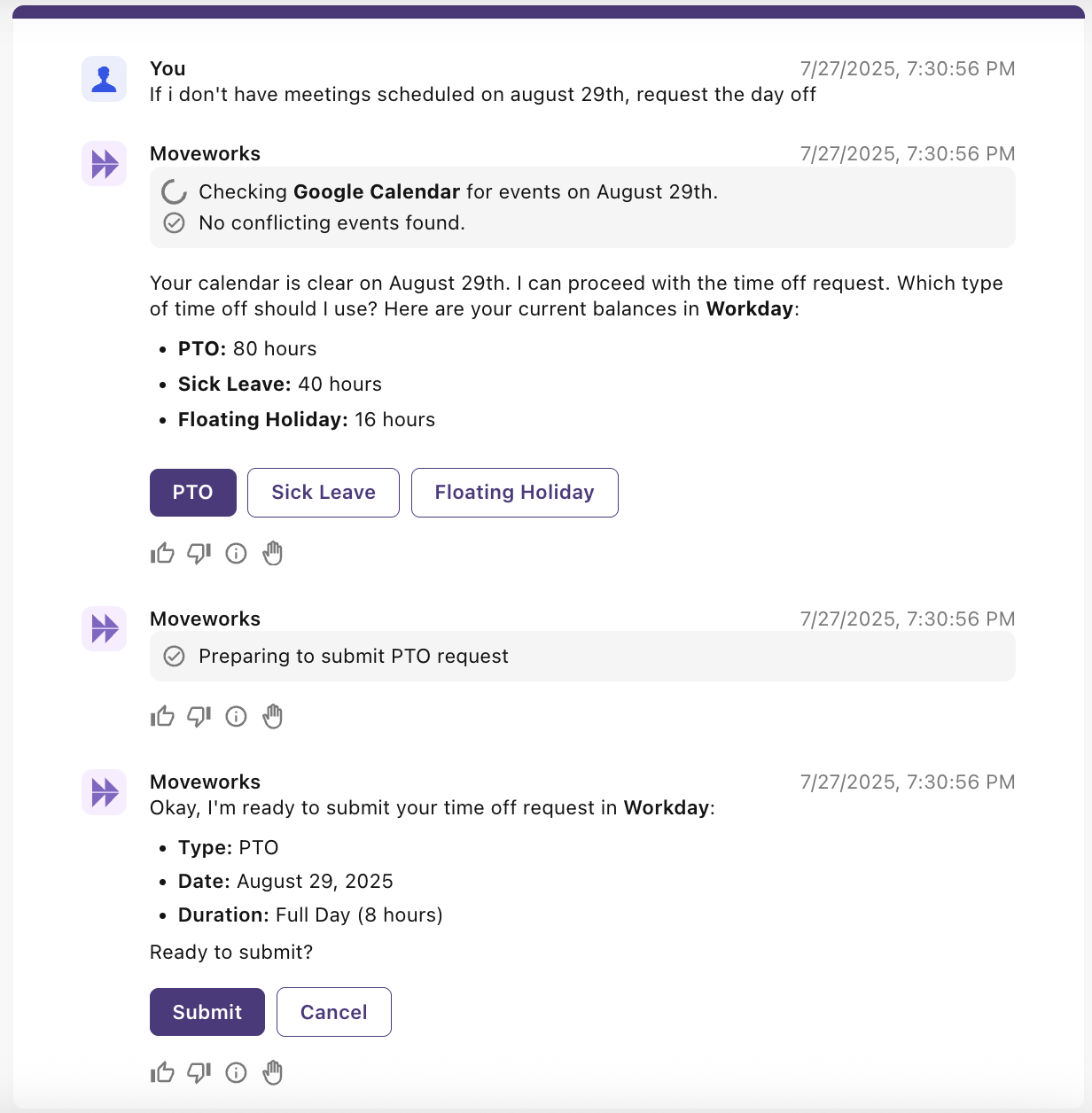
Action agents for engineering teams
Dev teams spend time manually closing pull requests, which slows down workflow and increases context switching. AI agents can automatically close a pull request when asked, freeing developers to focus on work that propels the business forward.
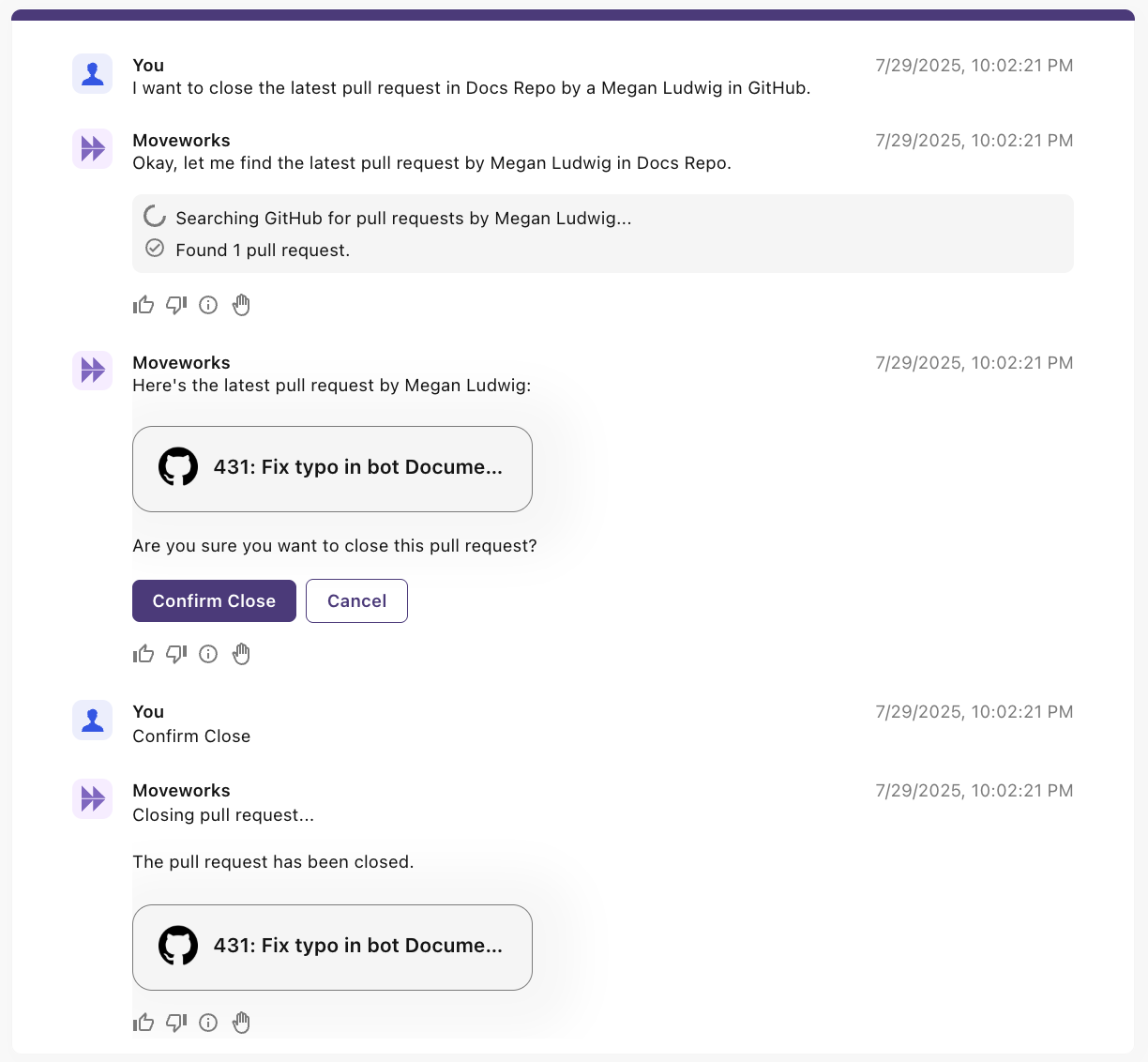
3. Ambient agents: The invisible workforce
Ambient agents anticipate needs and take action autonomously, bringing humans into the loop when it matters. They’re always-on, system-driven AI agents that operates in the background and spring into action the moment they’re needed. They don’t wait for a user prompt. They listen. They act. They serve as an invisible, intelligent workforce.
They autonomously execute multi-step workflows defined by developers including closed loop LLM tasks (like reviewing meeting notes, contract documents, procurement guidelines, etc), without the need for third-party middleware. This means they can act on signals and automate business processes as soon as relevant events occur, rather than waiting for someone to ask for help or trigger an action manually.
While these agents can run fully autonomously, the Moveworks AI Assistant can proactively reach employees through their native collaboration tools, allowing agents to request approvals directly from decision-makers and ensuring that automated actions are governed, auditable, and trusted.
Ambient agents are the ultimate proactive partners, designed to automate mundane tasks, identify critical issues, and move work forward the very instant it needs to happen. This level of proactive intelligence means you can unlock latent workflows and catch problems before they even surface, transforming reactive operations into a truly anticipatory business that never misses a beat.
Let’s dive into a few examples.
Ambient agents for sales teams
Sales reps spend valuable time researching new leads before they can take action. Ambient agents automatically alert reps to high-priority leads and enrich them, so reps can spend more time on personalized outreach and closing deals.
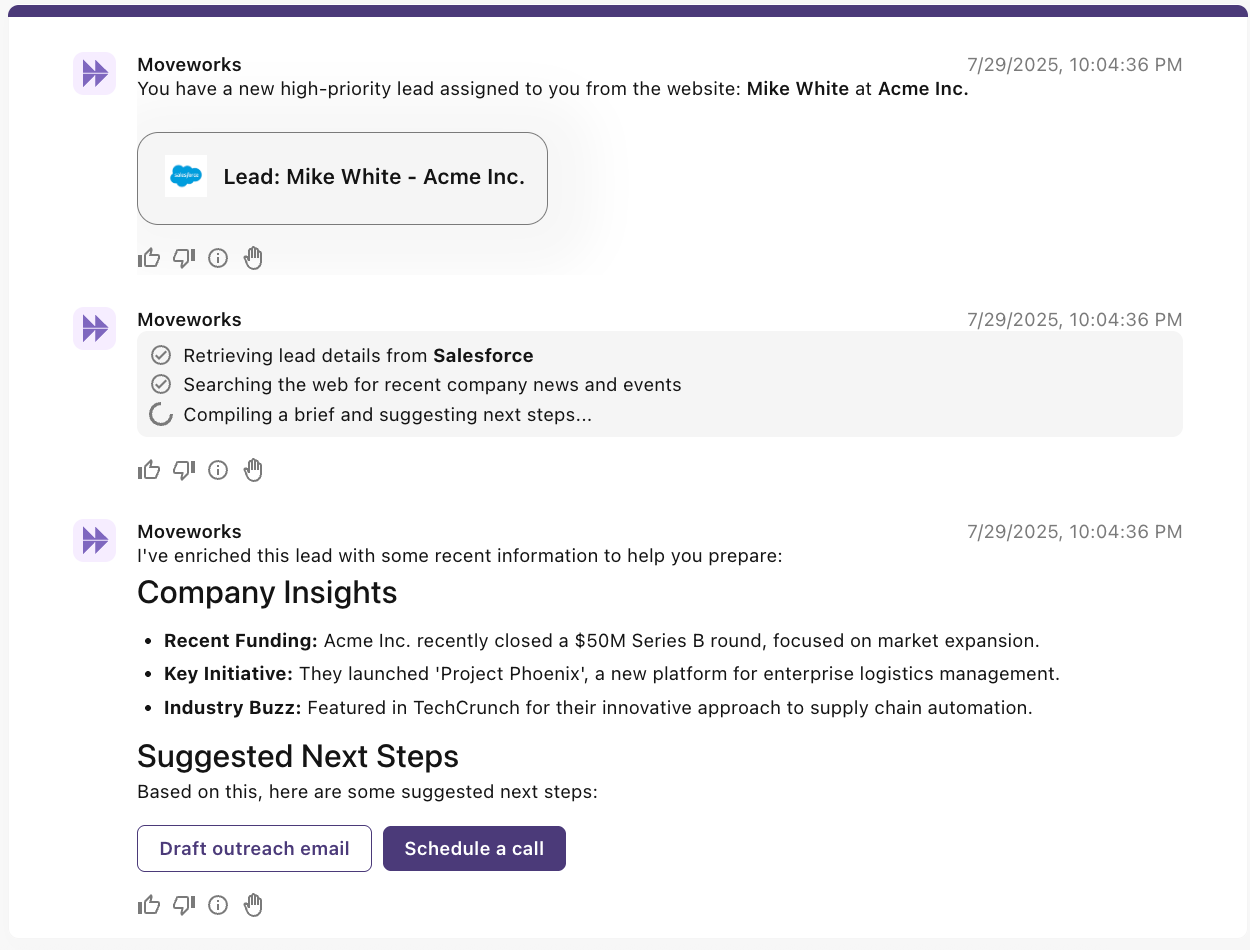
Ambient agents for marketing teams
Marketing teams need real-time insights into asset performance to act quickly. Ambient agents monitor engagement continuously and send alerts when assets hit key thresholds, enabling timely outreach and enhanced campaign results.
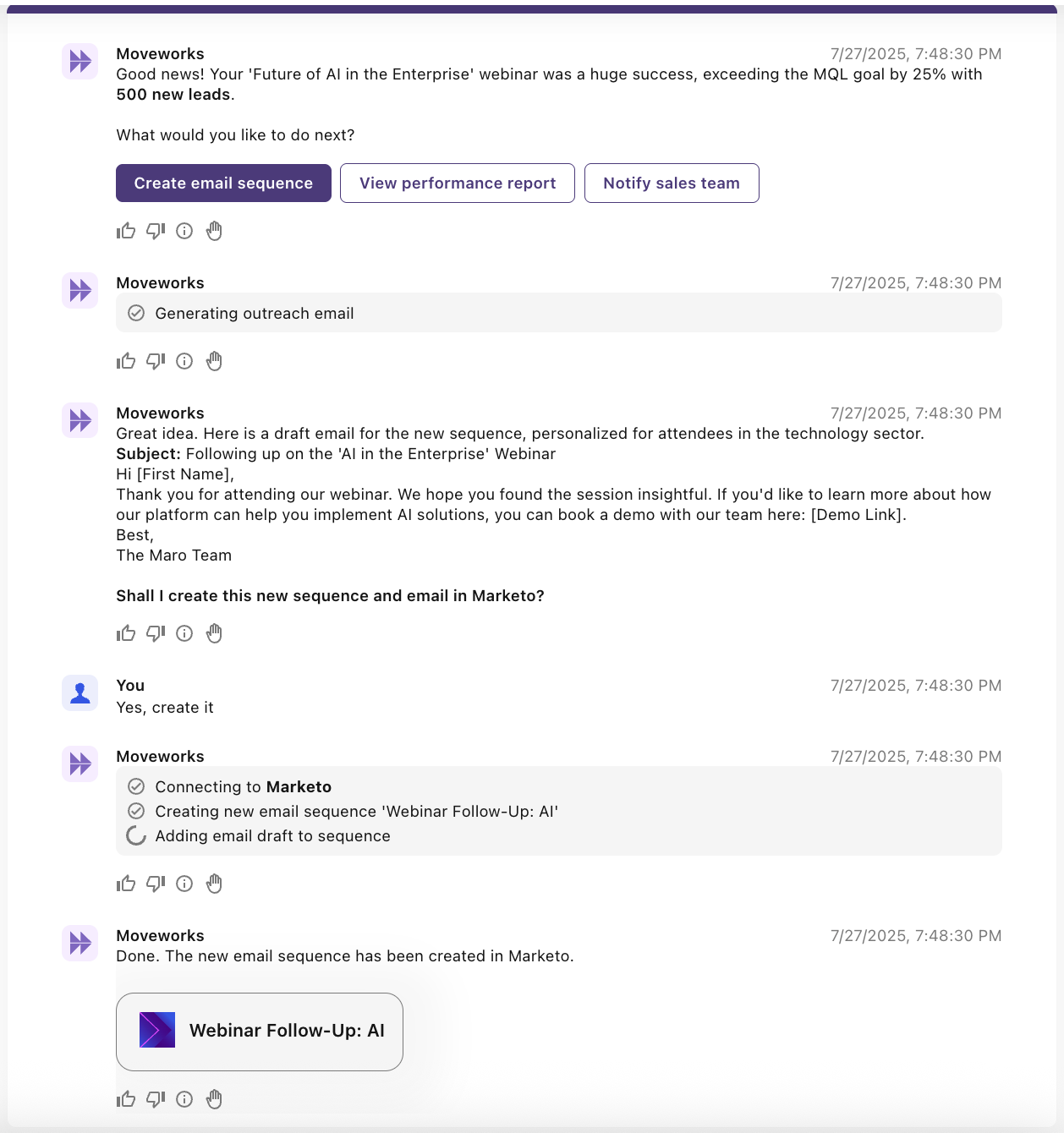
Ambient agents for product management teams
Automatically surfaces product feedback themes so PMs can focus on prioritization, not manual triage. Ambient agents fetch support issues, classify them by product area, summarize key themes, and notify the right PM, saving time and accelerating product decisions.
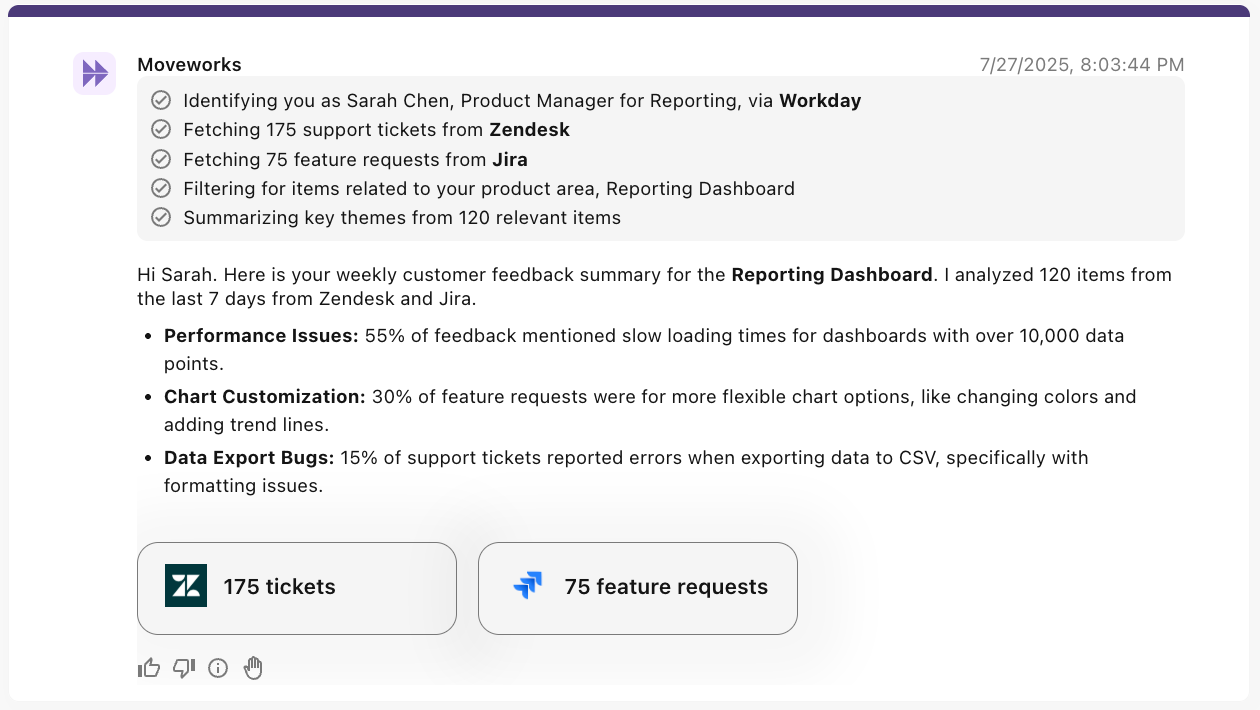
Stay tuned this month as we dive deeper into Ambient agents — exploring real-world use cases, best practices, and what it takes to bring proactive AI to life in the enterprise.
Choosing the right agentic AI platform
AI agents are transforming how businesses operate — not just by automating tasks, but by intelligently supporting employees and streamlining complex workflows. Across functions like IT, HR, sales, and finance, AI agents enhance employee support by providing fast, accurate help in the flow of work, improving satisfaction and reducing time to resolution.
At the same time, they are capable of analyzing data, triggering workflows, and connecting siloed systems to drive operational efficiency. By leveraging the right mix of agent types, companies can reduce manual overhead, make smarter decisions faster, and unlock scalable productivity across the enterprise.
With this potential in mind, selecting the ideal AI agent platform becomes critical. To fully realize these benefits, businesses must carefully assess their unique needs and environment. Here are key factors to consider when choosing the right AI agent solution:
- Business goals: Define the specific problems you want AI to solve — whether it’s boosting efficiency, cutting costs, improving employee experience, or enabling proactive operations. Clear goals guide the right agent mix.
- Integration needs: Look for an agnostic platform that cam seamlessly integrate with your existing systems and tools to reduce friction and accelerate adoption.
- Scalability & flexibility: Choose a platform that can scale with your business growth and adapt quickly to changing processes.
- Accessibility & performance: Agents should work in the flow of work, responding to user-initiated or system triggers as they happen.
- Adherence to business policies: Choose agents that can act independently while still respecting business rules, governance, and human approval where needed.
- Security & compliance: Confirm the solution is built for enterprise-grade security to meet internal security guardrails and requirements.
Join us for the Ambient Edge — a month of showcasing the power of Ambient agents!
With a clear understanding of the unique strengths of Aggregation, Action, and Ambient agents, this month we’re turning our full attention to Ambient agents: the always-on, proactive AI that’s reshaping the human <> AI collaboration model. We’ll explore their real-world impact, share best practices, and showcase how they seamlessly integrate into workflows to drive smarter, faster, and more efficient outcomes.
Ready to transform your enterprise with the next generation of AI Agents?
- Attend our upcoming hackathon to get hands-on experience and build your own Ambient agents
- Discover ready-to-deploy AI agents through our AI Agent Marketplace
The future of work is proactive, and it's here now.

